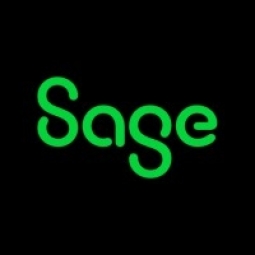Customer Company Size
SME
Region
- America
Country
- United States
Product
- Sage 100 Advanced ERP
- Business Alerts module
Tech Stack
- ERP
- Email Notifications
Implementation Scale
- Enterprise-wide Deployment
Impact Metrics
- Productivity Improvements
- Cost Savings
Technology Category
- Functional Applications - Enterprise Resource Planning Systems (ERP)
Applicable Functions
- Business Operation
Use Cases
- Inventory Management
- Predictive Replenishment
Services
- System Integration
About The Customer
PRD Management, Inc is a professional property management company that specializes in subsidized housing. The company is based in Merchantville, New Jersey and operates 15 large housing complexes in two states. PRD Management employs 65 people and is known for its innovative services for senior citizens, low-income families, and physically challenged individuals. The company's innovative management techniques have earned it numerous state and national awards, including Exemplary Family Project (1998) and Exemplary Senior Housing Complex (1997) from the National Affordable Housing Management Association, and Best Practices Award (2000) from the U.S. Department of Housing and Urban Development (HUD).
The Challenge
PRD Management, a professional property management company, was facing issues with its existing business software. The system was inflexible and riddled with bugs, leading to a loss of over $20,000 due to a software error. The company needed a reliable and automated solution that could manage the complex financial operations of a large management company with properties in two states. The software needed to be capable of posting deposits, cutting checks, reconciling bank statements, and creating government reports.
The Solution
PRD Management implemented Sage 100 ERP and the Business Alerts module. Sage 100 ERP is responsible for comprehensive financial management at PRD. It posts deposits, cuts checks, reconciles bank statements, and creates government reports. The Business Alerts module was set up to send an email whenever an item is over budget or questionable in any way. This allows for immediate red flagging of questionable transactions and more control and proactive decision-making. Business Alerts also sends out automatic reminders to staff members to pay taxes on time.
Operational Impact
Quantitative Benefit

Case Study missing?
Start adding your own!
Register with your work email and create a new case study profile for your business.
Related Case Studies.

Case Study
Hospital Inventory Management
The hospital supply chain team is responsible for ensuring that the right medical supplies are readily available to clinicians when and where needed, and to do so in the most efficient manner possible. However, many of the systems and processes in use at the cancer center for supply chain management were not best suited to support these goals. Barcoding technology, a commonly used method for inventory management of medical supplies, is labor intensive, time consuming, does not provide real-time visibility into inventory levels and can be prone to error. Consequently, the lack of accurate and real-time visibility into inventory levels across multiple supply rooms in multiple hospital facilities creates additional inefficiency in the system causing over-ordering, hoarding, and wasted supplies. Other sources of waste and cost were also identified as candidates for improvement. Existing systems and processes did not provide adequate security for high-cost inventory within the hospital, which was another driver of cost. A lack of visibility into expiration dates for supplies resulted in supplies being wasted due to past expiry dates. Storage of supplies was also a key consideration given the location of the cancer center’s facilities in a dense urban setting, where space is always at a premium. In order to address the challenges outlined above, the hospital sought a solution that would provide real-time inventory information with high levels of accuracy, reduce the level of manual effort required and enable data driven decision making to ensure that the right supplies were readily available to clinicians in the right location at the right time.

Case Study
Hardware Retailer Uses Data Warehouse to Track Inventory
Ace tracked which products retailers ordered, when they were ordered and shipped. However, the company could not track or forecast actual sales. Data used for reporting was up to a one-week old, owing to performance and data cleansing issues. Requirement to integrate wholesale and inventory data with POS data to help drive key business decisions, improve category management, lower inventory costs and optimize pricing. Reliance on custom coding to integrate POS data was excessively resource intensive and led to major performance constraints.

Case Study
Remake Enterprise-to-production System
The client was running a legacy material flow tracking system and wanted to replace the system with a more effective one as the system was increasingly expensive to maintain and support and also was not extendable. The client's IT landscape was filled with modern applications and it was difficult to interface the material flow tracking system with modern applications.

Case Study
Expertech - Capital Tool Inventory
Costly tools used to splice fiber optic cables are an important part of Expertech’s operational and capitalized expenses, but the company did not have an automated system in place to track their tools and optimize their usage. The existing data in its tracking system was inaccurate and required manual updating, making it essential for the company to implement an efficient process to track and follow up on its capital tool inventory.









